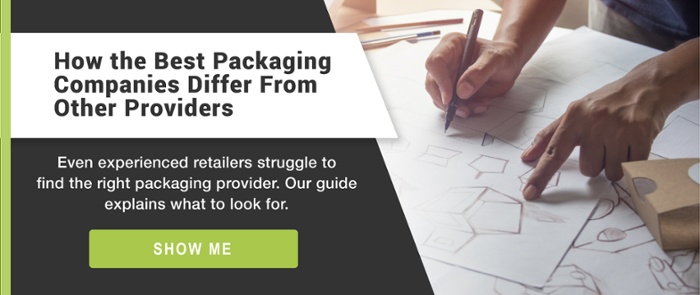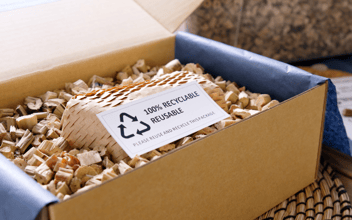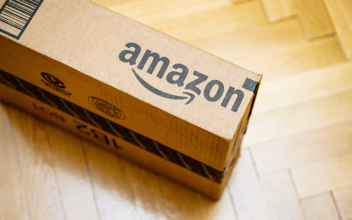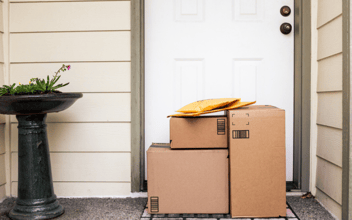Sustainable Packaging for Zero-Waste Products
Zero-waste products are becoming increasingly popular—but to be truly waste-free, your company also needs to use zero-waste or sustainable packaging.
After placing an online order, have you ever been surprised by the size of the box that arrives? When you open your package, you realize that your product is swimming in a sea of plastic, foam, or paper.
Consumer demand for sustainable or zero-waste products has skyrocketed, and companies must follow their lead by phasing out wasteful packaging materials. From a business perspective, companies also spend excessive money on unsustainable packaging materials and higher shipping costs.
Businesses of every size can become more efficient and sustainable when choosing zero-waste packaging options.
What is Zero Waste?
Zero-waste packaging and products eliminate waste produced from production and design, packaging, and shipping. Unlike recycling—which aims to repurpose existing waste into functional materials—the zero waste movement strives to avoid producing garbage in the first place.
The Zero Waste International Alliance defines the zero waste goal as: “…ethical, economical, efficient and visionary, to guide people in changing their lifestyles and practices to emulate sustainable natural cycles, where all discarded materials are designed to become resources for others to use."
Consider reusable packaging instead of recyclables when imagining a zero-waste approach, packaging products in materials like glass, wood, or biodegradable bags. For example, Level Ground Trading uses completely compostable wood pulp coffee bags. Salt Water Brewery packs its beer in edible six-pack rings made from barley and wheat, which can turn into fish food when disposed of in the ocean. IKEA has started using mushroom-based packaging for many of its products.
Why Zero-Waste Products are in Demand
Consumers are becoming more conscious of the planet and demanding that their products reflect these personal values. Governments worldwide are also responding. The European parliament banned many single-use plastics in 2021, and the California legislature introduced a bill to eliminate single-use plastic bottles in hotels. We still have a long way to go, but many businesses are starting to follow suit.
Thankfully, millennials and members of Gen Z are demanding greater social responsibility from brands. As a result, many large consumer packaged goods companies, retailers, and suppliers have signed on to the New Plastics Economic Global Commitment, which aims to tackle plastic pollution by reducing plastic packaging globally.
Right now, it’s still up to businesses to decide if they want to use zero-waste and sustainable packaging. Companies would do well to focus on their zero-waste efforts—surveys show that 26% of US adults ages 18-30 prioritized purchasing zero-waste products and packaging, and many more considered it when making buying decisions.
Consumers realize the limitations of recycling and continue to learn about the staggering consequences of plastics in our oceans and environment. They want to play an active role in combatting climate change, and your packaging plays a role in their efforts to do so. It’s not only important for your company to be zero waste—you must also find ways to incorporate facts about your zero-waste and sustainability efforts in your packaging. Now more than ever, consumers want brands to be a voice for social change—they want brands that work to solve, not just sell.
Sustainable Packaging for Zero-Waste Products
Setting a goal for zero-waste packaging and products is optimal for true environmental sustainability, but it’s not always possible right away. Especially for smaller businesses, starting with simple ways to offer more sustainable packaging makes a significant difference. Finding suitable zero-waste packaging can take time, so you’ll want to start by choosing sustainable options that produce minimal waste.
Zero-waste and sustainable packaging includes a wide range of options. Here are several examples of companies that use eco-friendly and zero-waste packaging:
- Monday’s Child produces kids’ clothing whose box doubles as a dollhouse.
- Bee Bright is a honey manufacturer whose jars are made from 100% beeswax, which can be used as a candle.
- Repack offers packaging that the buyer can send back after delivery.
- Even big players like KFC came up with edible cups for some of their food packaging offers.
More generally, eco-friendly packaging can include:
- Dissolvable packing peanuts
- Reusable glass containers
- Minimalist paper and cardboard packaging
- Avoiding the use of plastic tape and stickers
- Compostable mailers instead of plastic poly
- PET substrates instead of plastic
Along with the materials themselves, zero-waste and sustainable packaging require eco-friendly production, shipping, and logistics approaches.
Related Content: What is Eco-Friendly Cosmetics Packaging?
Partner with a Sustainable Packaging Company
Selecting the best eco-friendly packaging company for your business's needs can be challenging. Finding a packaging partner you trust who can walk you through all sustainable packaging options is key.
At GPP, we're thrilled to offer various sustainable packaging options that help you meet consumer demand and save money. Zero-waste and eco-friendly packaging takes up less shelf space and has less total volume than most traditional options, so you can fit more products in each load and lower your number of deliveries. Our sustainable packaging saves you costs on shipping, reduces your carbon footprint, and labels appropriate packaging with "environmentally friendly" to make sure consumers know you are walking the walk of sustainability.
An experienced sustainable packaging company helps you be as environmentally conscious as possible while keeping packaging affordable and brand-focused.
Takeaway
Achieving zero-waste packaging probably won’t happen overnight, but the steps you take to get there make a significant difference—and consumers will take note. Speak with a trusted and experienced packaging company to guide you through the process. It’s never too soon to move your company toward sustainable packaging and build a loyal and conscious customer base.






